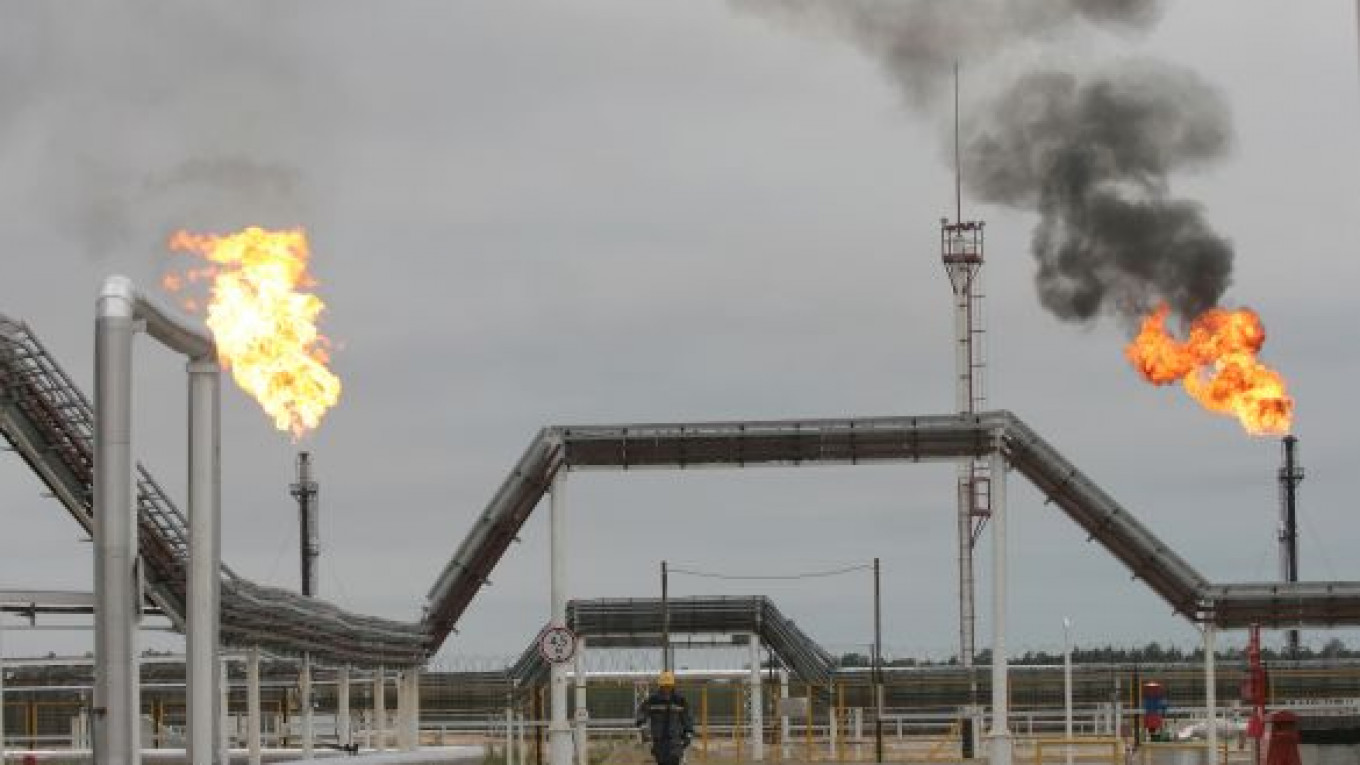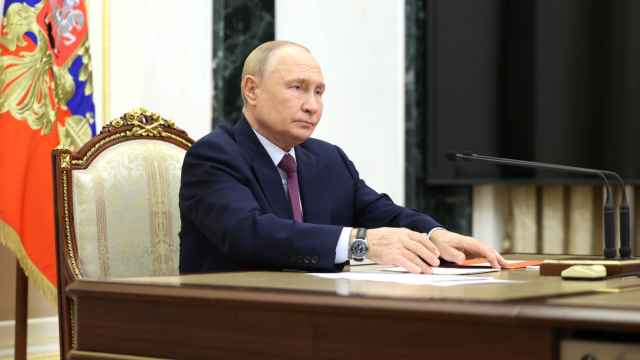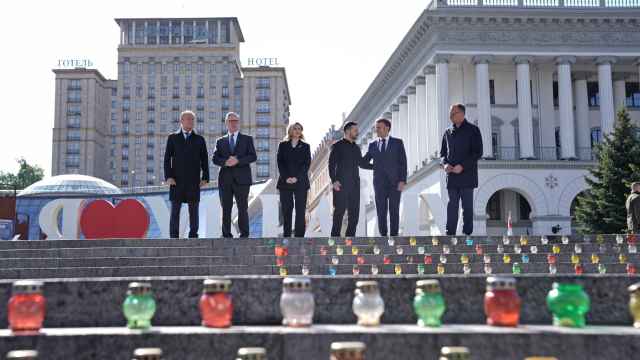The business plan for energy efficiency in Russia seems compelling: Invest $300 billion over eight years and save the energy equivalent of 300 million tons of crude oil a year, an ongoing annual turnover of $204 billion at current oil prices.
But there's a catch. The variables, pitfalls, and unknowns include the Russian government's vaguely worded commitments and programs, procurement rules designed to promote transparency that actually inhibit risk-taking, and a populace that, although thought to be ready to embrace the latest technology in light bulbs, remains convinced it has enough energy resources for a long, long time.
All the same, firms are beginning to invest cautiously to participate in the game, encouraged by independent analysis that confirms the possible returns.
A study by the International Energy Agency last fall concluded that Russia could have saved over 200 million tons of crude-oil equivalent — enough to power a large EU country — if it had used technology available to developed countries in 2008.
The upshot, as the IEA report succinctly noted, is that "the world needs Russian energy resources, while Russia needs improvement of energy efficiency."
Business On Board
In 2008, then-President Dmitry Medvedev set a goal of slashing consumption 40 percent by 2020 and advocated "work on the energy efficiency of our economy, which ultimately will help solve the global task related to climate change." Domestic and international technology firms pricked up their ears.
Some, like Rostov-region-based bank Center Invest, have cashed in by offering loans to finance energy-efficiency projects.
Business empires like Viktor Vekselburg's Renova Group have at least started incorporating words like "smart grid" and "energy saving" into their corporate literature.
Vekselburg, who also oversees the government's Skolkovo innovation hub, announced last month that the Skolkovo fund would pursue energy-saving technology in cooperation with Chinese companies.
Meanwhile, the governments of Germany, France and Finland have established energy-efficiency centers of expertise here to demonstrate their commitment, share know-how and help their countries' companies stake a claim.
At the beginning of June, the United States sent a trade delegation to Moscow to tap into a potentially vast market for energy-saving technology that was opened by the Russian government's drive to slash domestic energy waste.
Francisco Sanchez, the U.S. undersecretary for international trade, led the delegation. He rejected the suggestion that Americans have arrived to the party late.
"President [Barack] Obama and Dmitry Medvedev discussed cooperation in this sector already in 2010," he told The Moscow Times.
Furthermore, American companies have already implemented similar projects in Russia. When the country joints the WTO, the market opening will be a springboard, he added.
Huge Potential
Russia has the largest natural gas resources in the world, and at current production rates, proven reserves alone will be sufficient for at least 60 years. Its oil reserves, the world's eighth-largest, will be sufficient for over 20 years, not counting the discovery of new deposits, according to the BP Statistical Review of World Energy published in June.
As a result, few Russians see any looming risks to their energy security. Fully 53 percent surveyed by the Eurasian Monitor in 2007 said they did not believe the country is facing any shortage of energy resources.
However, Russia is not only an energy producer but a very hungry consumer. It is the third-largest primary energy consumer, after the United States and China, and it is much less efficient.
The United States manufactures almost twice as much for each unit of energy it consumes, according to World Bank figures. China produces about 20 percent more than Russia for each energy unit.
In 2008, the World Bank published a report that said Russia could reasonably slash its energy consumption by 45 percent. That would generate a potential annual saving of 300 million tons of crude-oil equivalent, enough to supply Germany, France, Brazil or South Korea for a whole year.
The Plan
Medvedev's 2008 decree set a target of 2020 and aims to reduce Russia's energy consumption per unit of gross domestic product by at least 40 percent compared with 2007 levels.
That was followed in November 2009 by a federal law on energy saving. A year later, the Russian government approved a state program labeled "Energy Saving and Energy Efficiency Improvement till 2020."
The state program concedes that energy consumption per unit of GDP is 2.5 to 3.5 times higher in Russia than in developed countries.
This difference is partly explained by Russia's vast landmass, severe winters and industrial structure, IEA experts say. Other contributors include the enduring Soviet-era practice of artificially depressing prices for utilities and public services, and the outdated and inefficient heating, lighting, and air conditioning systems in many homes and businesses.
According to the state program on energy saving, the vast majority of power plants, homes, boilers, generation equipment and heat distribution networks were built before 1990.
About a quarter of the refrigerators in the country were purchased more than 20 years ago, and 15 percent of industrial capital assets are obsolete.
The state program calls for 9.5 trillion rubles (the above-mentioned $300 billion) of investment, but only 695 billion rubles will come from the federal and regional budgets. The rest is expected to come from private-sector investment.
The 165-page document is filled with copious subprograms, generalities and consolidated numbers. It is short on details, though it does foresee an energy savings of slightly less than half of what the IEA hopes for.
According to the text, 22 percent of the projected savings are to come from oil, gas and coal companies, including refining and transportation.
An additional 44 percent is to be saved by major consumers in the areas of housing and utilities. A further 15 percent will come from the rest of the industrial sector, and the remaining 19 percent will come from improved power transmission to homes and municipal institutions like hospitals and schools.
The Siberian Torch
By far the most infamous waste of energy by Russia's primary producers is the wholesale burning of the petroleum gas produced as a by-product at oil fields.
Recovering, storing and transporting petroleum gas for commercial use is often considered too costly and too inconvenient. So since Soviet times, the gas has been routinely torched.
The resulting gas flares can be seen from space and make a spectacular sight for anyone flying over Siberia at night.
Russian agencies estimate that the country produces 60 billion to 70 billion cubic meters of associated gas per year, of which 15 billion to 20 billion is burned. That's enough gas to supply the whole of France for six months. Austria could live on it for two years.
The World Bank estimates that the losses are actually double the number Russia claims.
The state is aware of the problem. President Vladimir Putin said last summer, when he was prime minister, that "flares burning above oil deposits have become one of the symbols of careless and archaic treatment of our own natural resources."
Steps have been taken to rectify the situation. In 2009, the government told oil companies they must be using up to 95 percent of associated gas by 2012. But last spring, the Natural Resources and Environment Ministry acknowledged that this target would be missed.
While private companies, including Surgutneftegaz and LUKoil, have either achieved or are approaching the required level of recovery, the public sector is lagging behind. Rosneft, the No. 1 offender, is still burning 46 percent of its associated gas, and Gazprom Neft is flaring 44 percent, former Natural Resources and Environment Minister Yury Trutnev said.
Deputy Natural Resources and Environment Minister Denis Khramov said last month that oil companies would pay a hefty sum of 16.5 billion rubles in penalties for natural gas flaring this year.
That's an increase of 50 percent from last year, and it is the expected result of the decision to fine anyone who burns more than the 5 percent limit.
Oil companies are planning cumulative spending of 63 billion rubles in the 2012-14 period on projects to use the gas instead of allowing it to go to waste, former Energy Minister Sergei Shmatko said in March.
A Complex Mentality
While producers are being pressed by fines, commercial consumers are moving toward efficiency out of practicality.
Given the steady increase in gas and power prices, efficiency is a matter of survival for most businesses, said Sergei Pikin, director of the Energy Development Foundation.
Individual consumers, however, are not feeling the pinch yet. Unlike their European peers, who shell out hundreds of euros for utility bills and cut costs at every turn, domestic consumers in Russia pay an average of just 3,000 rubles per month for heat, gas and power, Pikin said.
Surveys indicate that people understand the waste problem. A poll by state-owned VTsIOM shortly after Medvedev's 2010 announcement of a ban on incandescent light bulbs of more than 100 watts found that 80 percent of Russians recognize the importance of energy efficiency to the country's economy.
But two years later, that ban, which came into effect in 2011, remains the best-known effort to increase energy efficiency for members of the public, despite promises of a massive public information campaign, Pikin said.
The main potential for energy saving at home lies not in changing light bulbs, however, but in turning down the thermostat.
Energy Ministry figures show that heating makes up 70 percent of the energy consumed by the average household. Cooking accounts for 15 percent, domestic appliances for 10 percent and lighting for just 5 percent.
But for most Russians, turning down the thermostat is not an option. Partly because of the harsh climate, domestic heating in Russia is centralized in the truest sense of the word.
Water is heated at power stations and piped via an elaborate network to each radiator in each house. This means there is no individual control over the temperature in homes. If an apartment gets too hot, an open window becomes the thermostat.
One way to solve this problem is to install equipment that allows an apartment to take as much water from the heating main as it needs, and shut it off when it gets too hot.
But the solution requires not only money but also a collective effort, as it needs to be deployed in an entire building. Getting neighbors to agree can be tricky. Residential apartment blocks tend to be under the common ownership of their inhabitants rather than owned by a single landlord.
Market for Suppliers
In the industrial sector, however, demand for energy-saving technology is beginning to boom.
Leonid Sorkin, general manager of Honeywell in Russia and the CIS, said that his firm has worked on dozens of projects with industrial enterprises in the past four to five years and that interest among industrial clients in energy-saving solutions picked up well before the government approved its program.
The second-most-important segment is large-scale commercial real estate projects and municipal buildings, he said.
But in the public sector, the one the government's program should be able to influence the most, things are only slowly beginning to pick up, Sorkin said. And progress is stymied by bureaucratic difficulties.
At the end of last year, Honeywell signed a "performance contract" with the St. Petersburg city government for an all-inclusive renovation of a city hospital – insulation, installation of a new energy supply, heating, air conditioning and ventilation systems.
It's one of the first examples in Russia in which the contractor has fully or partially covered the expenses and recovered the investment when the customer starts saving energy.
Such deals are common in Europe and North America and should be one of the key tools for aiding Medvedev's efficiency drive in Russia.
But Sorkin said performance contracts can run into difficulties because procurement legislation dictates that authorities put contracts up for public tenders, where the main criterion is competitive pricing.
Bidders who offer a minimal price will not necessarily have the technology and experience to slash energy use in the long term, Sorkin said.
Despite such challenges, officials see the market as wide open and highly competitive. The market is so large that many Western companies have begun transferring production to Russia, said Yulia Chernyakhovskaya, deputy general manager of the Russian Energy Agency at the Energy Ministry.
She cited a factory in the Krasnoyarsk region that started turning out smart meters this year based on technology by Sagemcom, a French company.
"We always support such initiatives. Transfer of Western technologies and know-how is a strategic direction of our work," she said.
Programs showcased by her agency at an April presentation for the European Bank for Reconstruction and Development and the International Finance Corporation included heating-supply projects in the Tver and Kostroma regions, water-supply improvements in Perm region and Ingushetia, and work by a number of businesses in the Kursk region and Yakutia.
One project was recommended for EBRD financing, one has not secured funding so far, and five projects are being updated to attract financing from the International Finance Corporation.
According to the federal energy-saving program, Russia should have saved 32.5 million tons of fuel equivalent (about 23 million tons of oil equivalent) in 2011. But the government has not published any final results. Nor has anyone estimated any figures for the industry as a whole.
"Subsidies provided from the budget to support the best regional programs were received only at the end of last year," said Timur Ivanov, former chief of the Russian Energy Agency. "Therefore, all entities have been essentially involved in preparation until now. Now they must begin the actual project implementation."
Chernyakhovskaya said about 47 billion rubles was handed out for regional energy-saving programs in 2011, 19.7 billion rubles of which came from federal, regional and local budgets. The rest was provided by nonbudgetary sources.
State funding is meant to attract money from elsewhere, and in theory it is reserved for activities that precede investment efforts: energy research, development of consumption monitoring systems, regulatory and methodological support and administrative assistance to investors.
While there is no confirmed estimate of the value of the potential market, the uncertainty is not putting off major firms, said David Johnson, vice president of Nalco Ecolab, an American energy- and water-saving-technology supplier, which has been dealing with Russia for over 20 years and accompanied the recent U.S. trade delegation.
The surge in demand that Medvedev's initiatives are meant to unleash is still five to six years in the future, Johnson said.
Nonetheless, Nalco Ecolab has set a target of increasing its Russian business by 30 percent annually until it gains 30 percent market share.
The potential is huge, Johnson said.
A Message from The Moscow Times:
Dear readers,
We are facing unprecedented challenges. Russia's Prosecutor General's Office has designated The Moscow Times as an "undesirable" organization, criminalizing our work and putting our staff at risk of prosecution. This follows our earlier unjust labeling as a "foreign agent."
These actions are direct attempts to silence independent journalism in Russia. The authorities claim our work "discredits the decisions of the Russian leadership." We see things differently: we strive to provide accurate, unbiased reporting on Russia.
We, the journalists of The Moscow Times, refuse to be silenced. But to continue our work, we need your help.
Your support, no matter how small, makes a world of difference. If you can, please support us monthly starting from just $2. It's quick to set up, and every contribution makes a significant impact.
By supporting The Moscow Times, you're defending open, independent journalism in the face of repression. Thank you for standing with us.
Remind me later.






